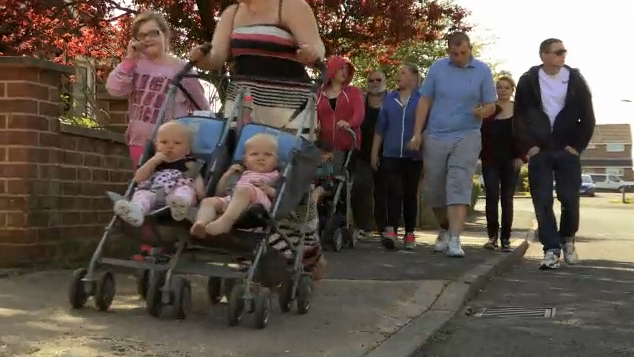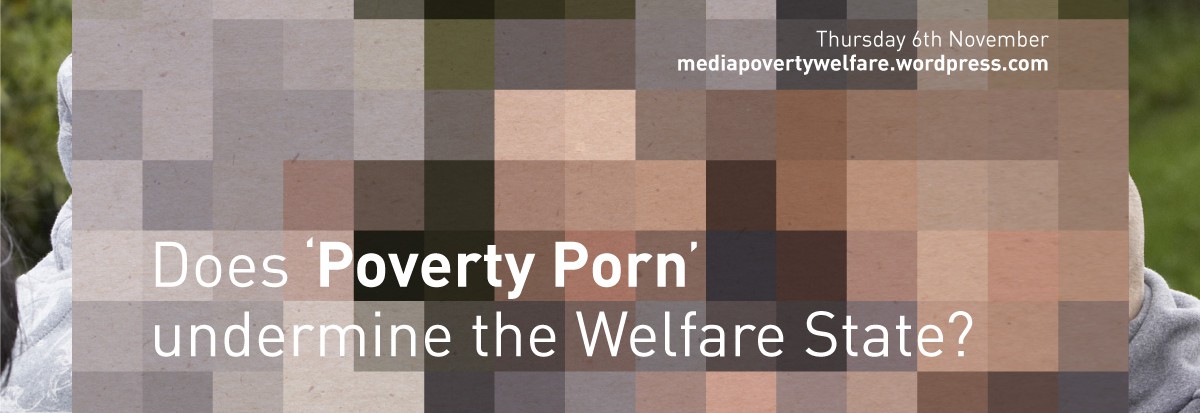In August this year, Iain Duncan-Smith announced his intentions to get ‘even tougher’ on the welfare system and to further reduce the Household Benefit Cap. The Cap formed a key plank of the Welfare Reform Bill 2012, was endorsed in Parliament in 2013 and finally implemented in April 2014. It limits the total amount of benefits any household can claim to £500 per week for households with children and £350 for a single adult and is the Coalition’s single most popular policy. According to a YouGov poll in January 2013, 76% of people surveyed agreed with the Benefit Cap. Continuing with his project to reduce welfare spending, Duncan-Smith has promised to reduce the Cap even further after the next election if the Conservatives win.
Duncan-Smith positions himself as the courageous reformer of a bloated and out-of-control welfare state, stating in an interview that the previous government ‘spent thirteen years letting the rot set into the welfare state, and I am now busy putting things right’. The imagery is striking, and similar metaphors are littered throughout his speeches and interviews; in one typical example, Duncan-Smith refers to ‘people languishing on welfare’, the ‘money paid out to pacify them’, living in ‘a twilight world’, representing a ‘terrible waste of human potential’. Elsewhere, he begins a newspaper article by stating that the welfare state is “a sorry story of dependency, wasted taxpayers’ money and fraud”.
The new commonsense ideas around welfare and the welfare state (which I have written about here) need repetitions such as these in order to ‘become’ true’ or ‘function in truth’. The genre of television which has become known as ‘poverty porn’ helps to animate and embed the ‘commonsense’ figures of Duncan-Smith’s welfare landscape into popular consciousness. Poverty porn television delivers names and faces to the viewer, in a highly orchestrated welfare debate, which can then be capitalised on by other parts of fast media culture and political rhetoric (see Allen, Tyler and De Benedictus, 2014). During the broadcasting of Channel 4’s Benefits Street for example, one of the central characters, ‘White Dee’, was the subject of several newspaper stories every single day. In the moral theatre of poverty porn, it is not the indignity and injustice of poverty that forms the centre of the story. Rather it is the personal lives of people on benefits that serve as a site for immense scrutiny, opened up by television cameras, delivered to the viewing screen of the nation, something to be peered at, dissected, judged and assessed. The characters of this television genre are presented as undisciplined, lazy and shameless, neither legitimate citizen nor consumer, exiled from the routine of the working day and forever trying to grasp yet more from the very benefits system which has created their condition of dependence.
There are so many examples of this genre now but I want to focus on one recent episode which demonstrates how such programming, far from ‘lifting the lid’ on poverty, is in fact essential to embedding public consent for the rollback of welfare entitlement. Life On The Dole is the latest offering from Channel 5 (who also made On Benefits And Proud which I have written about here), a six-part series which promises to “get up close and personal with the people behind the headlines as it explores the lives of those living on benefits”. Episodes in the series focus on seaside towns (‘Benefit Brits by the Sea’), communities in South Yorkshire (‘Benefits, Babies and Jail’), and several large families in overcrowded accommodation (‘Benefits House: Me and my 22 Kids’). The finale promises to ‘revisit’ families featured in the series but is in fact simply a re-broadcast of On Benefits and Proud with a new voiceover. This serves as a powerful illustration of the importance of repetition in poverty porn and the pseudo-celebrity machinery at work in this cultural industry of disgust.

Image: “Benefits Britain has never been bigger” – opening voiceover for Channel 5’s Life on the Dole
The third episode in this series, ‘Benefits House: Me and my 22 Kids’, focuses on three families, who the voiceover repeatedly describes as ‘super-size families’. Large families have become one of the central figures of crisis in welfare reform debates, and a dominant mythology around welfare reform is that ‘benefit-dependent’ families have large numbers of children to maximise their entitlements. The voiceover opens the programme by telling us that ‘big benefits families need big homes – that’s one of the largest benefits bills’, suggesting from the first few minutes that the benefit payments to large families are a significant component of the welfare bill. We are told during the programme that one of these families has ‘raked in half a million quid’, one of the mothers ‘knows that a big family can be a benefit goldmine’ and that ‘now the family is definitely quids in’.
Each of the families featured lives in significantly overcrowded housing; in some cases four children sleeping in each bedroom, one mother sharing her double bed with a baby and two children, a father sleeping on the sofa. One family have a disabled son whose physical requirements cannot be met in their current home. The repeated attempts of each family to secure a tenancy in a larger home which would adequately house their families are described scornfully as ‘demands’ by the voiceover, positioning them as grasping and greedy, part of the insatiable and bloated welfare state. When one of the families are told their home will finally be extended through to the neighbouring house, the voiceover sarcastically states that ‘they’ll get double the space but it won’t cost them a penny.’ When the same family comment on the domestic upheaval they are experiencing as this is done (having to cook on a camping stove in the living room, for example) the voiceover states with a sigh that ‘for some people, it’s never enough’. This is particularly cowardly television, which carefully edits camera footage to elicit judgement alongside a sneering voiceover that the participants cannot know and cannot respond to.
One of the stand-out features of poverty porn television is its failure to reflect upon the part it plays in the theatre of media cruelty for people receiving welfare benefits. All three of the ‘supersize families’ featured in the programme have found themselves misrepresented in scathing newspaper stories.
There is a real failure of the programme-makers to explore this. Stigmatising media stories about the participants is seen as unavoidable, reflecting local feeling and in public interest, the voiceover simply stating that ‘big families on benefits can often find themselves hitting the headlines. And with 26 kids it’s not surprising…”’. Both Peter and Marie offer an articulate response to their targeting; Peter highlighting the grotesque pay rise of a local politician which forms the neighbouring newspaper story to his housing request and asking why this is not the bigger scandal, and Marie commenting that the stigma faced by her and her children is worse than would be experienced by a convicted murderer. Tim and Mandy meanwhile, face threats on their family through social media and resort to installing CCTV surveillance in order to feel safe. The narrator simply describes this as ‘a bit of nightmare. Some of the locals are far from happy.’ There appears to be very little soul-searching from the programme-makers about the part that poverty porn television plays in inciting such hatred.
Poverty porn programming such as this reinvents an imagined ‘underclass’ for the purposes of welfare reform ‘debate’ which is set to immiserate the most marginalized and precarious families in Britain even further. It presents the ‘others’ on the screen as dysfunctional in their choices and behavior, as well as presenting a dysfunctional welfare state which rewards such ‘lifestyles’. Large families constitute a tiny proportion of those who receive welfare benefits – in fact the largest single group of claimants is pensioners – yet they are constantly presented, along with other figures of crisis such as unemployed and immigrants, as major parasitical drains.
Large families, rare in number yet hypervisible through repetitive media coverage, are fast becoming one of the main signifiers in a ‘welfare war’ waged by this government. Accompanying his promise to reduce the Household Benefit Cap to £18,000, Duncan-Smith has floated the suggestion to limit benefit payments to the first two children only. It is likely he will enjoy popular support for this policy suggestion. The January 2014 YouGov survey, that revealed the popularity of the Benefit Cap also found that 49% of those surveyed would support the Cap being lowered even further to £15,000. The DWP’s own statistics show that the Benefit Cap is overwhelmingly affecting households with more than four children, and families that live in London, due to the distorted housing costs. Public consent for the these policies of immiseration is generated via the stigmatising of large families – through high-profile criminal cases like the Philpott family (where domestic abuse was rewritten as welfare abuse), through poverty porn such as ‘My Benefits House’, and through repetitive media features on their entitlements. In the war on welfare, such media machinery makes large families an easy target for those seeking to dismantle the welfare state.




Reblogged this on Social Abjection .
LikeLike